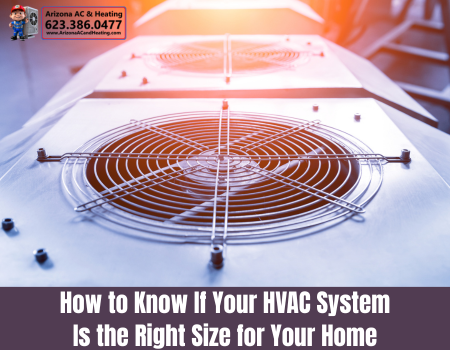When it comes to home comfort and energy efficiency, your HVAC system (heating, ventilation, and air conditioning) plays a central role. But one factor many homeowners overlook is whether their system is sized correctly for their home.
An HVAC system that’s too big or too small can lead to higher utility bills, uneven temperatures, frequent repairs, and a shorter system lifespan. So how can you tell if your HVAC system is the right size for your home? Let’s break it down.
 Why HVAC System Size Matters
Why HVAC System Size Matters
The “size” of an HVAC system doesn’t refer to its physical dimensions — it refers to its capacity to heat or cool your home, measured in BTUs (British Thermal Units) per hour for heating and tons for cooling (with one ton equal to 12,000 BTUs).
For an HVAC system to operate efficiently, its capacity needs to align with your home’s size, insulation, layout, local climate, and other factors. If the system is too large, it will turn on and off frequently, wasting energy and causing uneven temperatures. If it’s too small, it will run continuously as it struggles to keep up, leading to higher energy bills and reduced comfort.
How to Tell If Your HVAC System Is the Wrong Size
Experiencing any of the issues below? It could mean your system isn’t properly sized for your home.
1. Inconsistent Temperatures
Some rooms feel too hot while others are too cold, even when your system is running.
2. Short Cycling
The system turns on and off frequently, sometimes running for only a few minutes before shutting down. This usually happens with oversized systems.
3. Constant Operation
If your HVAC runs non-stop without reaching the set temperature, it might be undersized for your home’s needs.
4. High Energy Bills
An improperly sized system uses more energy than necessary, whether it’s constantly running or frequently cycling on and off.
5. Excessive Humidity
An HVAC system that’s too large cools the air quickly but doesn’t run long enough to remove humidity, leaving the home feeling damp or clammy.
6. Early Wear and Tear
When a system short cycles or runs excessively, it increases wear and tear, leading to more frequent repairs and a reduced lifespan.
How HVAC Professionals Determine Proper System Size
A professional HVAC technician doesn’t guess your system size based on square footage alone. They use a method called a Manual J Load Calculation, a standardized formula developed by the Air Conditioning Contractors of America (ACCA).
This calculation factors in:
- Total square footage of your home
- Number and size of windows and doors
- Insulation quality and type
- Local climate conditions
- Number of occupants
- Ceiling height
- Layout and sun exposure
- Ductwork condition and design
This detailed assessment determines the exact heating and cooling load your home requires, ensuring your system is neither over- nor under-sized.
Approximate HVAC Sizing Guidelines
While a Manual J calculation is the most accurate way to size an HVAC system, here’s a rough estimate often used for quick assessments:
Cooling:
- 1 ton (12,000 BTUs) of cooling capacity is needed for every 500 to 600 square feet of living space in a typical home.
Heating:
Around 30 to 60 BTUs per square foot, depending on insulation and climate conditions.
For example, a 2,000-square-foot home might need a 3.5 to 4-ton air conditioner and a 60,000 to 120,000 BTU furnace, depending on other variables like insulation and window type.
What to Do If Your HVAC System Isn’t the Right Size
If you think your system might be improperly sized, it’s a good idea to have a licensed HVAC professional conduct a load calculation and evaluate your setup. Options might include:
- Adjusting ductwork or zoning to improve distribution and efficiency.
- Upgrading or downsizing the unit during your next replacement.
- Adding insulation or sealing air leaks to reduce heating and cooling loads.
While it might not be practical to replace an existing unit immediately, knowing your system’s capacity and limitations can help you plan for future upgrades and improve your home’s comfort in the meantime.
An HVAC system that’s correctly sized for your home ensures consistent comfort, better energy efficiency, and a longer system lifespan.If your system runs constantly, cycles too quickly, leaves rooms unevenly heated or cooled, or drives up your energy bills, it may not be the right size for your home.
The best way to be sure is to schedule a professional load calculation and system evaluation. It’s a small investment that can save you money, improve comfort, and extend the life of your heating and cooling system.
